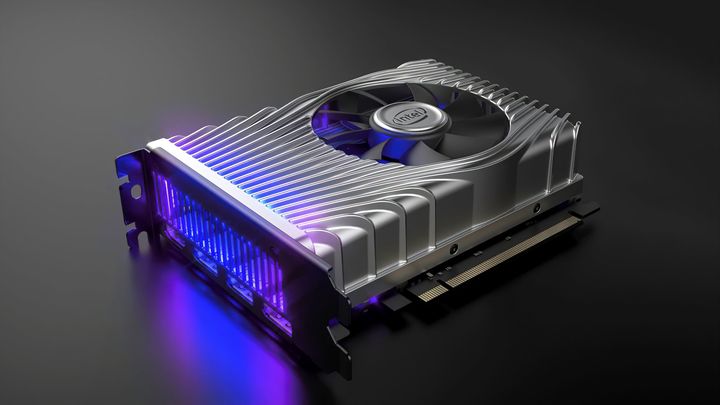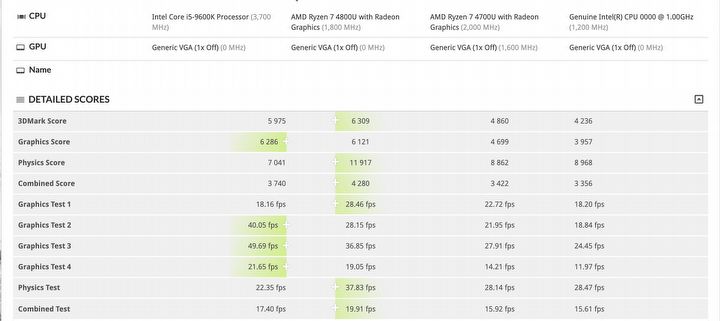Intel Xe DG1 GPU Can be 40% Faster Than Mobile AMD Vega
First benchmarks of the Intel Xe line GPUs have appeared on the web. The results of some tests suggest that dedicated Intel GPU, the DG1, may be up to 40% faster than AMD's mobile solutions. In other tests, Intel's graphics card is performing noticeably worse than competitive solutions.

IN A NUTSHELL:
- In some benchmarks, Intel Xe DG1 performs 40% better than the AMD Vega chipset to be used in Ryzen 4800U;
- Other tests indicate the advantage of AMD's solution;
- Work on the Intel Xe is still ongoing and the performance presented currently may differ from the final specs;
- Leak suggests that Xe may have hardware support for ray tracing.
According to Wccftech, the first benchmarks of Intel Xe GPU from the test of Software Development Vehicle (SDV) have appeared on the web. This includes a dedicated card known for the time being as DG1, as well as integrated units found in Tiger Lake-U processors. In some 3DMark benchmark tests, Intel's dedicated GPUs boast performance that is up to 40% better than the latest AMD Vega (7 nm), which is to accompany Ryzen 4800U CPU.
Intel Xe DG1 - great in some tests
The advantage of Intel's GPU is evident in three out of four graphic tests. AMD's product has achieved a better result in only one - the one that focuses on volumetric lighting and shadows (the others mainly check efficiency in generating geometry and textures, including the so-called tessellation). In the case of Ryzen 4800U, calculations related to physics were also better. As a result, AMD's unit can boast a better result in the combined test and a higher end result. However, Xe is a completely new product line and it cannot be ruled out that the engineers and programmers working on it have not yet optimized all possible areas. This would explain the poor results in some tests and great in others.
Performance of integrated Xe chipsets
It is worth noting that the aforementioned Intel's advantage concerns the comparison between a dedicated and an integrated card, which is not entirely fair (another thing is that DG1 will not be a GPU for gamers, but rather a low-end product). Xe GPU variant accompanying the Tiger Lake-U processors (the last one in the table above) performed much worse, probably due to a very low clock, rated at just 1.0 GHz. However, this product is being developed by a different team than DG1 and it is also difficult to assess the current stage of optimisation work (the timing suggests that much can still change). Its potential capabilities are demonstrated by the results of another test, which compares it with a dedicated Intel Xe model. The integrated GPU performs about 9% worse.
It's hard to draw any consistent conclusions from all this - you can see that work on Intel Xe GPU is still far from over and the results of individual tests are very different. Nevertheless, in some benchmarks, Intel's proposals are quite promising, which is a good forecast for their potential capabilities. Of course, the final exam will only come in the form of in-game tests, which we will probably have to wait for.
Intel Xe with ray tracing support?
Last but not least, there's a reference to hardware ray tracing acceleration in Intel GPU's drivers code. This suggests that Xe chipsets can support ray tracing, same as currently available GeForce RTX from Nvidia, and future AMD Navi products. Whether it's for the models that Intel is currently working on or for the next Xe cards, ray tracing is now a high-profile topic (due to next-gen consoles, among other things), so Intel may want to make sure that its chipsets are competitive in this regard from the start.
We will learn more about the capabilities and features of Xe GPU next month at GDC 2020 (to be held in San Francisco on March 16-20). Intel confirmed that during the event it will host a panel devoted to the discussed architecture.
0
Latest News
- End of remote work and 60 hours a week. Demo of Naughty Dog's new game was born amid a crunch atmosphere
- She's the new Lara Croft, but she still lives in fear. Trauma after Perfect Dark changed the actress' approach to the industry
- „A lot has become lost in translation.” Swen Vincke suggests that the scandal surrounding Divinity is a big misunderstanding
- Stuck in development limbo for years, ARK 2 is now planned for 2028
- Few people know about it, but it's an RPG mixing Dark Souls and NieR that has received excellent reviews on Steam, and its first DLC will be released soon



